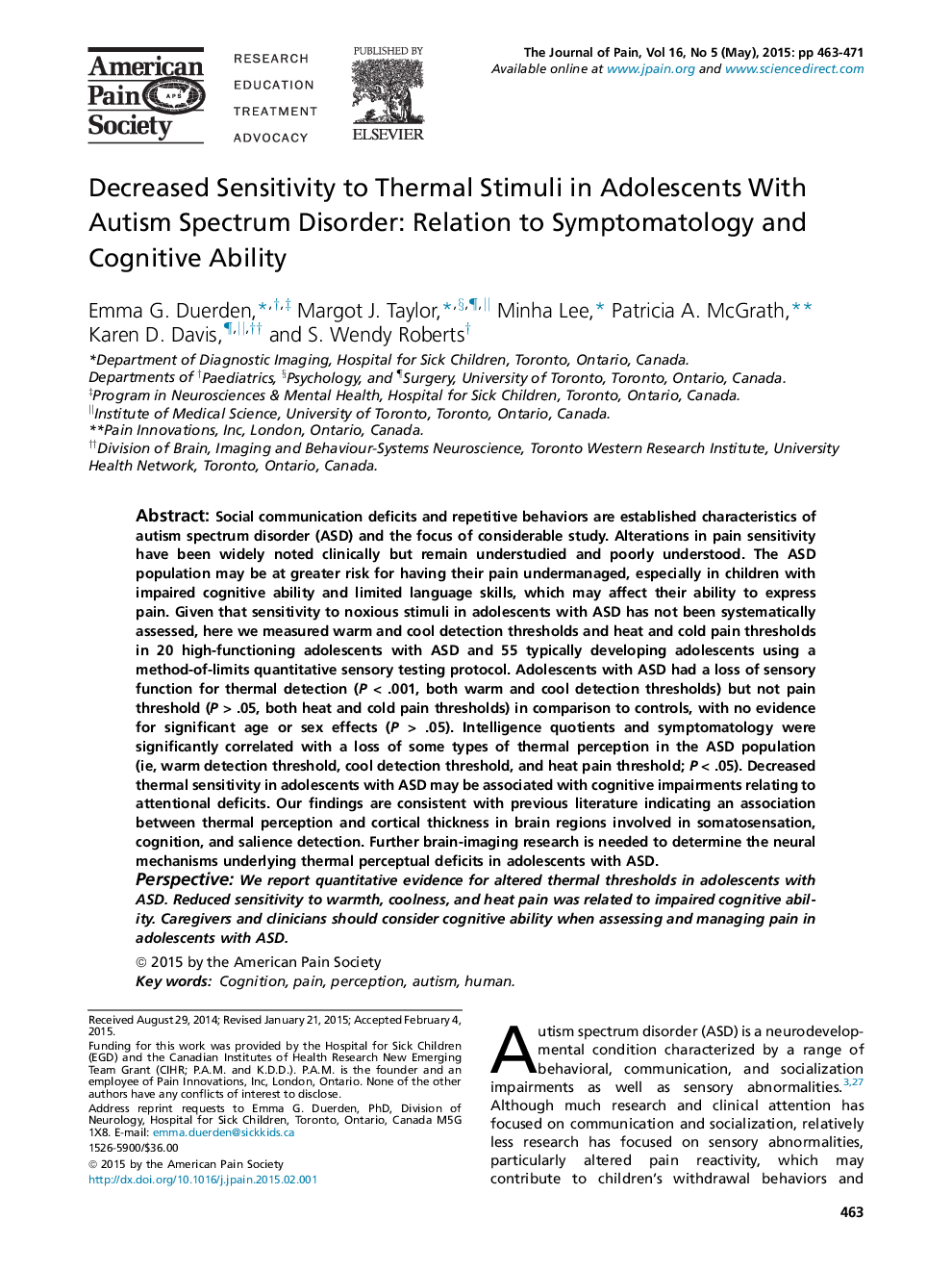| کد مقاله | کد نشریه | سال انتشار | مقاله انگلیسی | نسخه تمام متن |
|---|---|---|---|---|
| 2728667 | 1566733 | 2015 | 9 صفحه PDF | دانلود رایگان |
• Anecdotal reports indicate that children with autism do not feel pain.
• Children's thermal thresholds for warmth and cool detection and heat and cold pain were tested.
• Children with autism had lower thresholds for cool and warmth detection.
• Warmth, cool, and heat pain perceptions were related to intelligence.
• Reduced thermal sensitivity may reflect lack of awareness or attention.
Social communication deficits and repetitive behaviors are established characteristics of autism spectrum disorder (ASD) and the focus of considerable study. Alterations in pain sensitivity have been widely noted clinically but remain understudied and poorly understood. The ASD population may be at greater risk for having their pain undermanaged, especially in children with impaired cognitive ability and limited language skills, which may affect their ability to express pain. Given that sensitivity to noxious stimuli in adolescents with ASD has not been systematically assessed, here we measured warm and cool detection thresholds and heat and cold pain thresholds in 20 high-functioning adolescents with ASD and 55 typically developing adolescents using a method-of-limits quantitative sensory testing protocol. Adolescents with ASD had a loss of sensory function for thermal detection (P < .001, both warm and cool detection thresholds) but not pain threshold (P > .05, both heat and cold pain thresholds) in comparison to controls, with no evidence for significant age or sex effects (P > .05). Intelligence quotients and symptomatology were significantly correlated with a loss of some types of thermal perception in the ASD population (ie, warm detection threshold, cool detection threshold, and heat pain threshold; P < .05). Decreased thermal sensitivity in adolescents with ASD may be associated with cognitive impairments relating to attentional deficits. Our findings are consistent with previous literature indicating an association between thermal perception and cortical thickness in brain regions involved in somatosensation, cognition, and salience detection. Further brain-imaging research is needed to determine the neural mechanisms underlying thermal perceptual deficits in adolescents with ASD.PerspectiveWe report quantitative evidence for altered thermal thresholds in adolescents with ASD. Reduced sensitivity to warmth, coolness, and heat pain was related to impaired cognitive ability. Caregivers and clinicians should consider cognitive ability when assessing and managing pain in adolescents with ASD.
Journal: The Journal of Pain - Volume 16, Issue 5, May 2015, Pages 463–471
